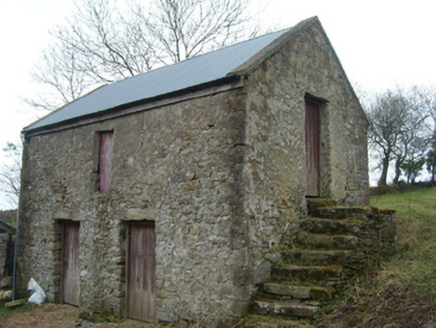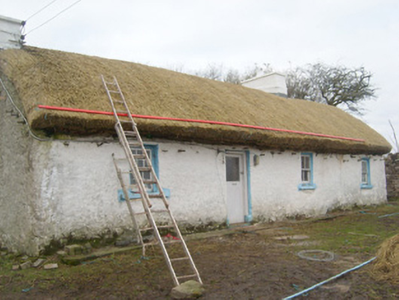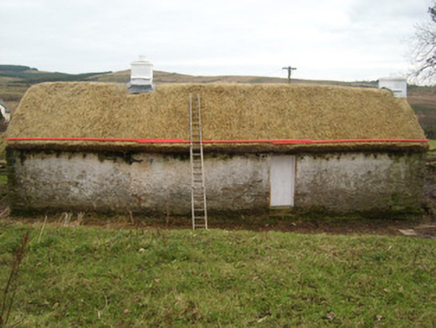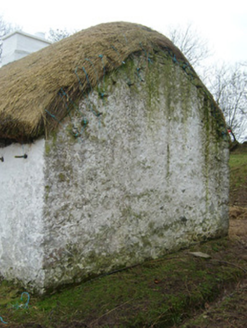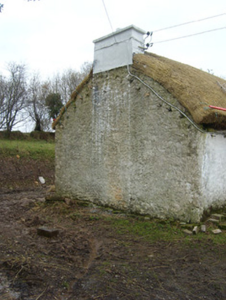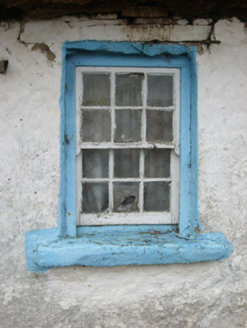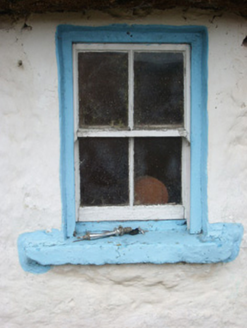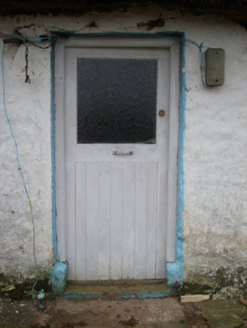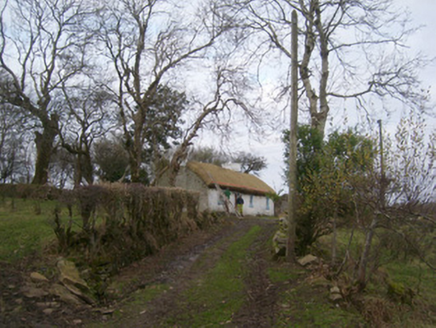Survey Data
Reg No
40909211
Rating
Regional
Categories of Special Interest
Architectural, Technical
Original Use
House
In Use As
House
Date
1840 - 1880
Coordinates
176470, 379394
Date Recorded
12/10/2007
Date Updated
--/--/--
Description
Detached four-bay single-storey vernacular house, built c. 1860. Pitched straw thatched roof having two rendered chimneystacks (one to the south gable end and one offset to the north side of centre). Metal pegs below eaves level (for securing ropes over thatch) to the front and rear elevations, and along gable ends. Whitewashed roughcast rendered rubble stone wall. Square-headed window openings with stone sills and having six-over-six and two-over-two pane timber sliding sash windows. Square-headed door opening, offset to the south side of centre), having plinth blocks and replacement half-glazes timber sheeted door. Largely blank elevation to rear (west) having one square-headed doorway with timber sheeted door. Set back from road in elevated site to the north of Dunkineely. Approach avenue to house from the south. Vernacular two-storey outbuilding to east having pitched corrugated-metal roof with raised rendered verges to the gable ends, rubble stone walls with roughly dressed and squared flush quoins to the corners, and square-headed doorways and loading bays having timber sheeted doors; some doorways having stone lintels over. Flight of cut stone steps to gable end giving access to north gable end giving access to doorway at first floor level. Yards to front and rear of site.
Appraisal
This charming and well-maintained thatched vernacular house retains its early form and character, and is an appealing feature in the isolated rural landscape to the north of Dunkineely. Its architectural integrity and visual expression ins enhanced by the retention of the majority of its salient fabric, including timber sliding sash windows. Modest in scale, it exhibits the simple and functional form of vernacular building in Ireland. Of particular interest in the survival of the thatch roof, although recently renewed, which is now sadly becoming increasingly rare in Donegal. The rounded roof is a typical feature of thatched houses located close to the sea in exposed areas in the north-west of Ireland, while the pegs to the eaves were used to tie ropes (and sometimes nets) over the roof to secure it against the prevailing winds, as is the case here at Calhame. The largely blank rear elevation is a typical feature of many small-scale vernacular dwellings in rural Ireland. The form of this building and location of the chimneystacks suggests that this building is of the ‘direct entry’ type that is characteristic of the vernacular tradition in north-west Ireland, and also suggests that this building was extended to the north by a bay at some stage. The substantial two-storey rubble stone outbuilding to site adds considerably the setting and context of this dwelling, and is an important vernacular survival in its own right. The flight of stone steps giving access to a door at first floor level is a feature of many vernacular outbuildings in rural Donegal, particularly in the south-west of the county. This house represents a fine surviving example of a once ubiquitous building type in the rural Irish countryside, and is one of the better and more attractive surviving examples of its type in County Donegal.
